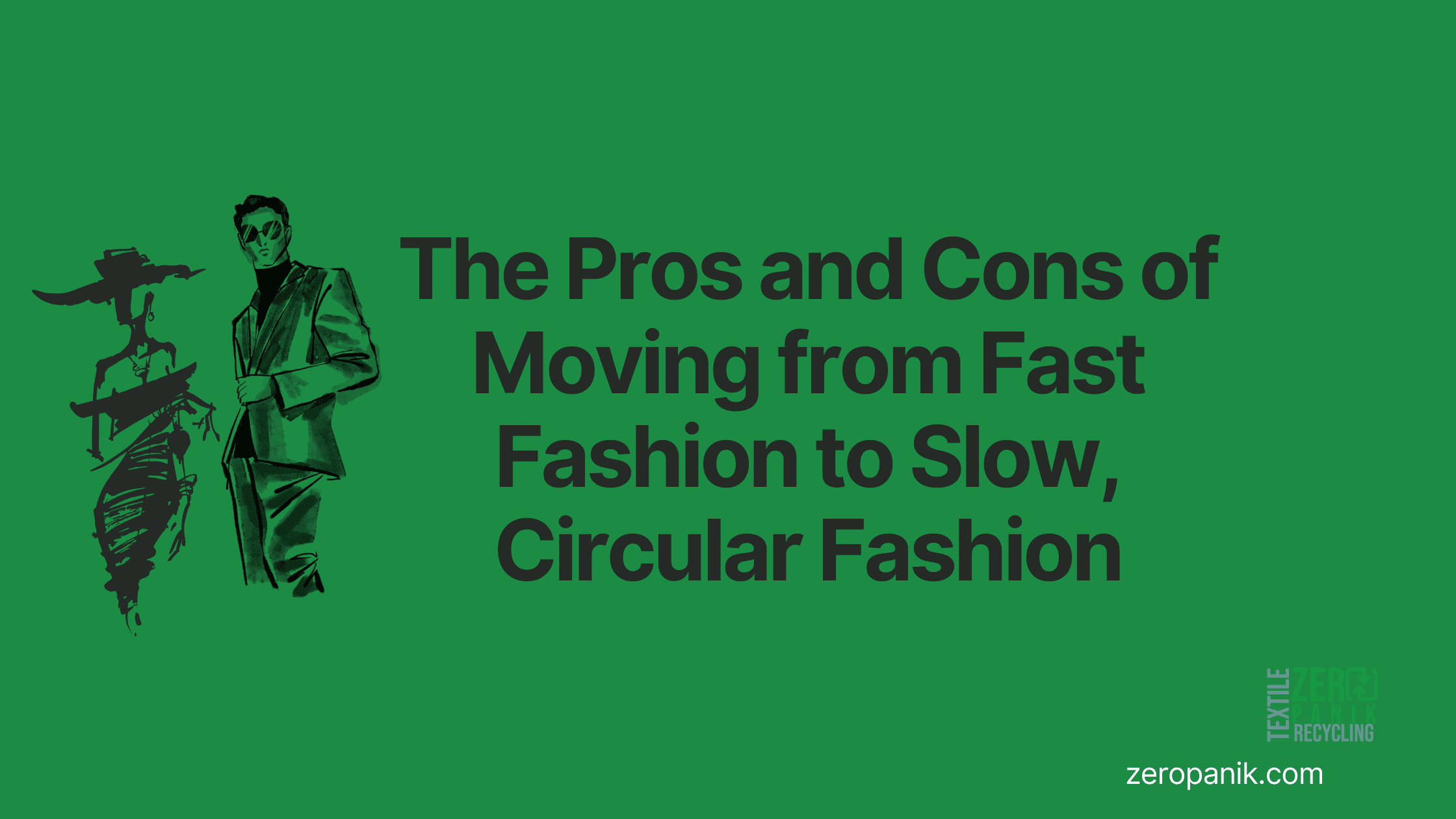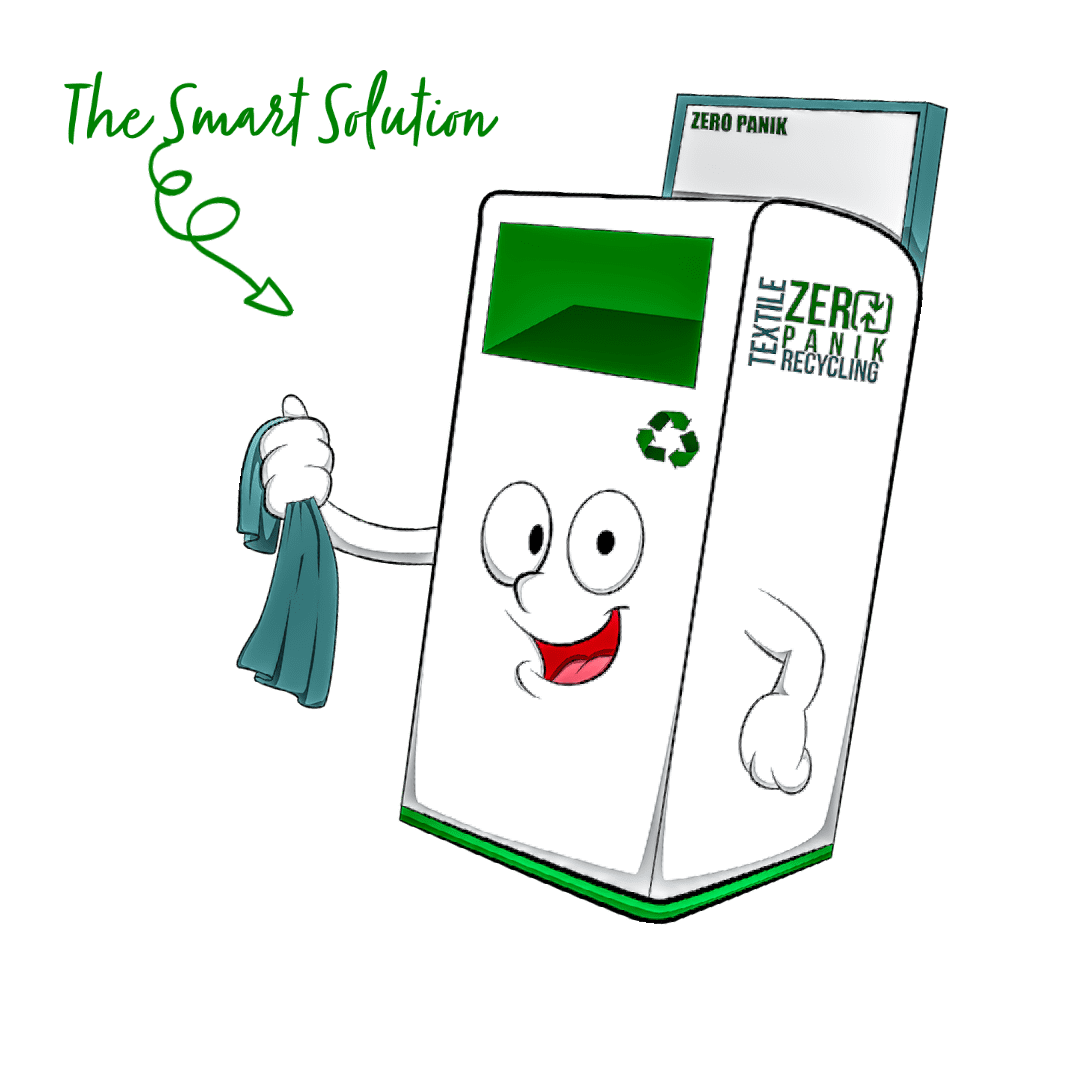
Introduction
The fashion industry is one of the most polluting industries in the world. Every year, we produce billions of garments that end up in the landfill. But it doesn’t have to be this way. There is a growing movement of people who are rejecting fast fashion in favor of slow, sustainable, and ethical fashion.
This blog is all about moving from fast fashion to slow, circular fashion. We’ll explore the reasons why fast fashion is unsustainable, and why slow fashion is a much better option. We’ll also learn about the benefits of circular fashion, and how we can all make the switch to this more sustainable way of consuming fashion.

The Negative Impacts of Fast Fashion
Fast fashion has devastating environmental, social, and economic impacts. From an environmental standpoint, the production of fast fashion causes excessive pollution of rivers and water sources. The chemicals and dyes used in producing these cheap garments cannot be filtered and thus, flow directly into these water bodies.
Secondly, fast fashion is responsible for exploiting millions of garment workers — largely in developing countries. Although the fashion industry is a multibillion-dollar business, the workers often suffer from exploitative working conditions, low wages, and a lack of safety for the physical and mental health of the workers.
Lastly, fast fashion contributes to our ever-growing problem of overconsumption. Since 2016, the global clothing industry has doubled. This is due to the low-cost fast fashion garments someone could buy and discard shortly afterward. This massive wastefulness has a detrimental effect on our planet.
The Slow Fashion Movement
The slow fashion movement is an alternative and more sustainable approach to the fast fashion phenomenon. The term ‘slow fashion’ was coined by Kate Fletcher, a British designer, in the mid-2000s. The slow fashion movement is based on the principles of sustainability and the idea of value in fashion. It aims to reduce the negative impacts of fast fashion on textile workers, the environment, and the culture of overconsumption.
The slow fashion movement is based on five key values: craftsmanship as an art, sustainability and environmental protection, fair wages and working conditions for studios, ateliers, and factory workers, fashion as an expression of cultural history, and an appreciation of natural fabrics and fibers.
By valuing the slow fashion principles of craftsmanship, environmental protection, and workers’ rights, the movement seeks to reverse the exploitative nature of the fashion industry and its negative repercussions on people and the planet.
The slow fashion movement is gaining momentum and inspiring people around the world to buy less and invest in unique and sustainable fashion pieces. By making this switch, we can create a more sustainable and ethical fashion industry.
Making the Switch to Slow, Circular Fashion
Switching to a slow circular fashion is an important step for people to take to make a positive change in their lifestyle.
Slow circular fashion is a system for the continuous production of clothing that is designed, produced, used, and reused in a way to provide social and environmental benefits. It is an alternative to the throwaway culture driven by the single-use fashion industry.
To make the switch to a slow circular fashion, you first need to understand the three circular steps:
1. Design: Design clothing with circular systems in mind. This includes creating garments with recyclable, biodegradable, and upcycled materials.
2. Produce: Produce clothing ethically to reduce its negative environmental and social impacts.
3. Reuse: Reusing and recycling clothing to keep them in circulation. This allows for multiple recycling processes and regeneration.
By understanding these steps, individuals and companies can make informed decisions about their purchase and production decisions which will ultimately benefit the environment, workers, and economy.
Conclusion
In conclusion, the future of fashion is looking to be circular and slow. While fast fashion may be the norm for many businesses and consumers, the damage it has done to the environment and society is immense.
Slow and circular fashion is an alternative that considers the entire lifecycle of clothing, from production to reuse and recycling. By understanding the three steps of circular fashion, individuals and companies can make informed decisions that reduce the environmental and social impacts of the fashion industry.
Changing the fashion industry is not simple – it requires a shift in both individual and corporate mindsets. But by making the change to slow and circular fashion, companies and customers alike can play their part in establishing a healthier, more sustainable future for the planet and its inhabitants.
